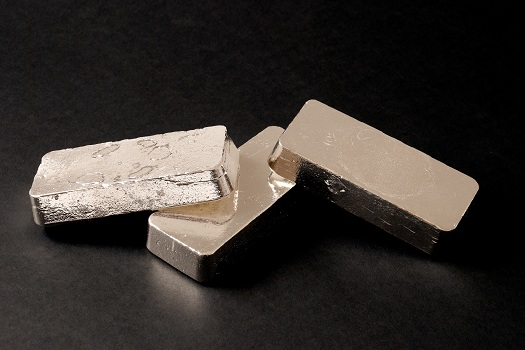How Are Regular Silver & Sterling Silver Different?
Silver mining dates back to around 3000 B.C., according to the Royal Society of Chemistry. Today, this precious metal is still very much appreciated. Like its equally sought-after and illustrious counterpart, gold, silver comes in different forms, one of which is sterling silver. Keep reading to get a better idea of the differences between “sterling” silver and what’s often termed “fine,” “pure,” or “regular” silver.
Regular Silver
Designated by the symbol Ag, silver is a natural element. Silver designated as “pure” or “fine” has a silver content of 99.9 percent. When silver is used to make jewelry, it’s often mixed with small amounts of other elements to make it firmer, since pure or fine silver is softer.
Referred to as bullion when it’s in solid form, silver is more likely to be used for currency or investment purposes. Solid forms of silver typically include:
• Silver bars and coins
• Less refined silver nuggets
• Silver ingots
Sterling Silver
First appearing in Europe in the 12th century, sterling silver is an alloy created by adding another metal to pure silver. This is done to reduce softness and make it more durable. Typically, sterling silver contains about 92 percent silver. The rest is usually copper, although some metals, like zinc or nickel, may be used as well.
Sterling silver is often used in jewelry making, since it’s easier to work with for this purpose. Sterling pieces fell out of fashion during World War II in the mid-1940s. This happened largely because sterling silver jewelry pieces were still primarily handcrafted back then, which made them less affordable for the general public.
Sterling silver experienced a resurgence in popularity a few decades before the 20th century came to a close. Today, it’s often used to craft a variety of pieces, including:
• Rings, bracelets, and necklaces
• Cutlery, tea sets, and other household items
• Mirrors and similar wall or decorative accessories
If you have items made of sterling silver and you aren’t sure of their value, reach out to the professionals at First National Bullion. Scottsdale residents can rely on the expertise of our staff, all of whom have at least 10 years of experience in the precious metals industry.
The Quality Comparison
If you go by silver content, traditional silver can be considered higher in quality. However, sterling silver does have an appearance that’s very similar to fine silver, so there’s not much of a difference aesthetically. This is more likely to be the case with true sterling silver, which is usually designated by an “SS” stamp and an indication of purity. Also, sterling silver tends to be more durable, since it’s mixed with other metals, but sterling silver can still last if it’s well cared for and properly stored.
Determining What’s Right for You
There’s no one better option between regular silver and sterling silver. The form of silver suitable for your needs and preferences will depend on several factors, including:
• Your reason for wanting silver – For instance, if you want to add silver to your investment portfolio, solid silver is what’s typically recommended.
• Your budget – Oftentimes, pieces crafted from pure or fine silver will be more of an investment than ones made from sterling silver.
If you need information on silver items you own or you’re looking for the best place to purchase Scottsdale silver bars, gold coins, and other forms of precious metals, reach out to the trustworthy professionals at First National Bullion. We can answer all your questions and help you decide which precious metals to add to your collection. Give one of our experienced dealers a call today at 480-546-8928.
The statements made in this blog are opinions, and past performance is not indicative of future returns. Precious metals, like all investments, carry risk. Precious metals and coins may appreciate, depreciate, or stay the same in cash value depending on a variety of factors. First National Bullion does not guarantee, and its website and employees make no representation, that any metals for sale will appreciate sufficiently to earn the customers a profit. The decision to buy, sell, or borrow precious metals and which precious metals to purchase, borrow, or sell are made at the customer’s sole discretion.


